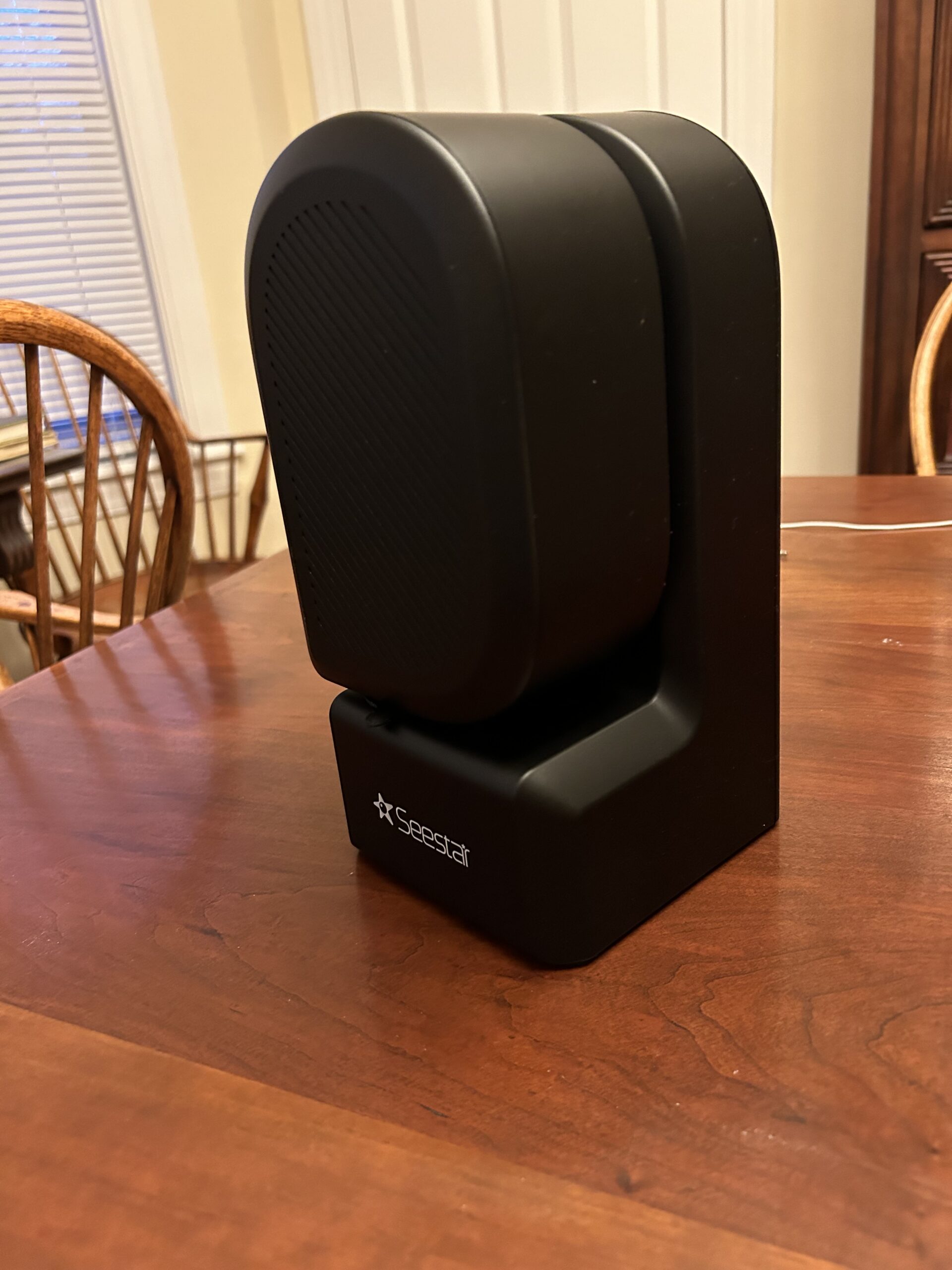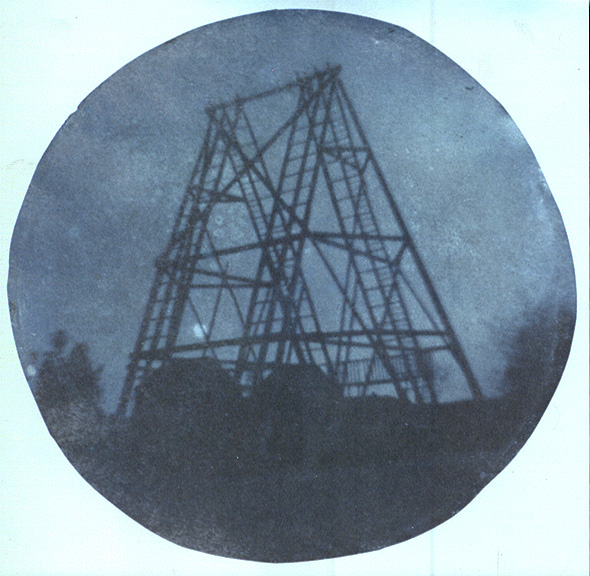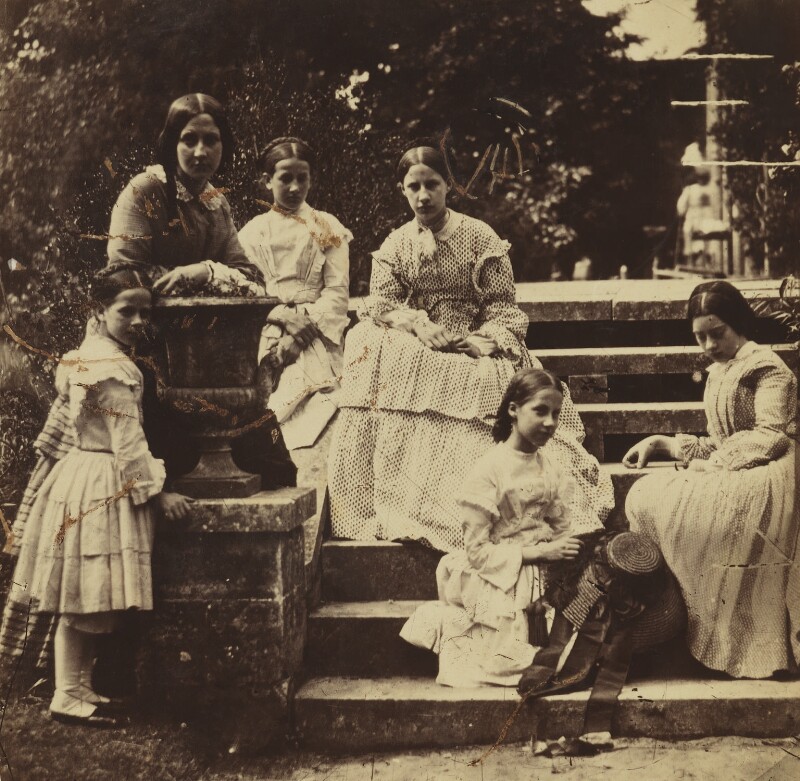OK, I admit it. I was supposed to go to Texas for the eclipse, but decide in the end that the weather forecast was too dismal and stayed home. I should have gone! Is Spain next? So i spent the afternoon with dear friends photographing the partial eclipse in Sudbury with my SeeStar 50s, see Figures 1 and 2.


Figure 3 shows a picture of the SeeStar 50s. This is a brilliant device and the cutting edge of what we may be pretty sure is a surging revolution in amateur astronomy. I’ll have more to say about this little robotic telescope in the future. But right now I just wanted to point out the here, resting on my dining room table, we have a basic altazimuth telescope system. A yoke enables the scope to move up and down in altitude, while a rotatable platform enables movement along the azimuth.

It connects wonderfully with Sir William Herschel‘s (1738-1822) design of his great “forty foot telescope” in 1744. Famously, George III led the then Archbishop of Canterbury into the tube saying, “Come, my Lord Bishop, I will show you the way to Heaven!” For my friends who gently chide me how amateur astronomy appears to be nine parts tinkering and adjusting and one part actually observing, I will point out that Sir William’s telescope was “down” most of the time. There were two speculum mirror, the main one weighing about a ton, and these were constantly being swapped out so that the other could be polished. Nevertheless, the “forty foot telescope” was instrumental [sic] in the discovery of Enceladus and Mimas, the 6th and 7th moons of Saturn.

showing the altazimuth mount of his father;s “40 foot Telescope” in the public domain By John Herschel – http://www.mhs.ox.ac.uk/features/ephotos/nphoto3.htm#photo, Public Domain, https://commons.wikimedia.org/w/index.php?curid=7833750
There is an interesting connection with photography. Sir John Herschel, William’s son is famous both as a pioneer of Astronomy and of Photography, His earliest photograph was of the frame of the altazimuth mount of his father’s “40 ft telescope.” This is shown in Figure 4.
One will, of course, wonder what became of this important instrument in the history of science. As a good father Sir John worried about his daughters (see Figure 5) getting hurt playing in the ruins of the giant frame and he had the structure dismantled in 1840 as a safety precaution.

